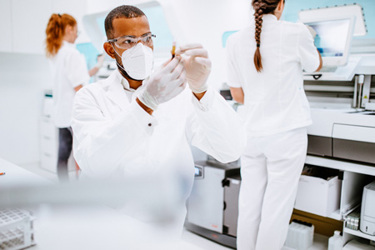Assessing The Differences In Fresh Commercially Available Hybridoma Media

Early in the field of hybridoma development, researchers used base media with serum-supplementation to support the growth and viability of the cell lines. An issue with serum use was the lot-to-lot variability associated with using this undefined component. As the desire to minimize run-to-run variability emerged, the focus shifted to culturing hybridomas in chemically-defined media. A common approach was to mix base media like DMEM/F12 with recombinant supplements. An encountered drawback from this approach was lower antibody production. To increase output, teams formulated chemically-defined media specifically for hybridoma manufacturing with higher levels of some media components (e.g., amino acids) compared to DMEM/F12. The higher levels of the media components supported better hybridoma growth and productivities, but the exact formulations were proprietary to the vendors.
In this application note two different chemically-defined cell medias intended for hybridoma culturing were tested. Both media samples were handled following the manufacturers’ instructions. The samples were diluted 50x before analysis on the Rebel with no additional sample preparation. Each vendor’s media was run five times, and levels were compared to the known formulation values of DMEM/F12 components.
Read how running a quick media analysis on the Rebel to give you the insight to help boost hybridoma growth and productivity when transitioning from a general base media to a chemically-defined media
Get unlimited access to:
Enter your credentials below to log in. Not yet a member of Bioprocess Online? Subscribe today.
